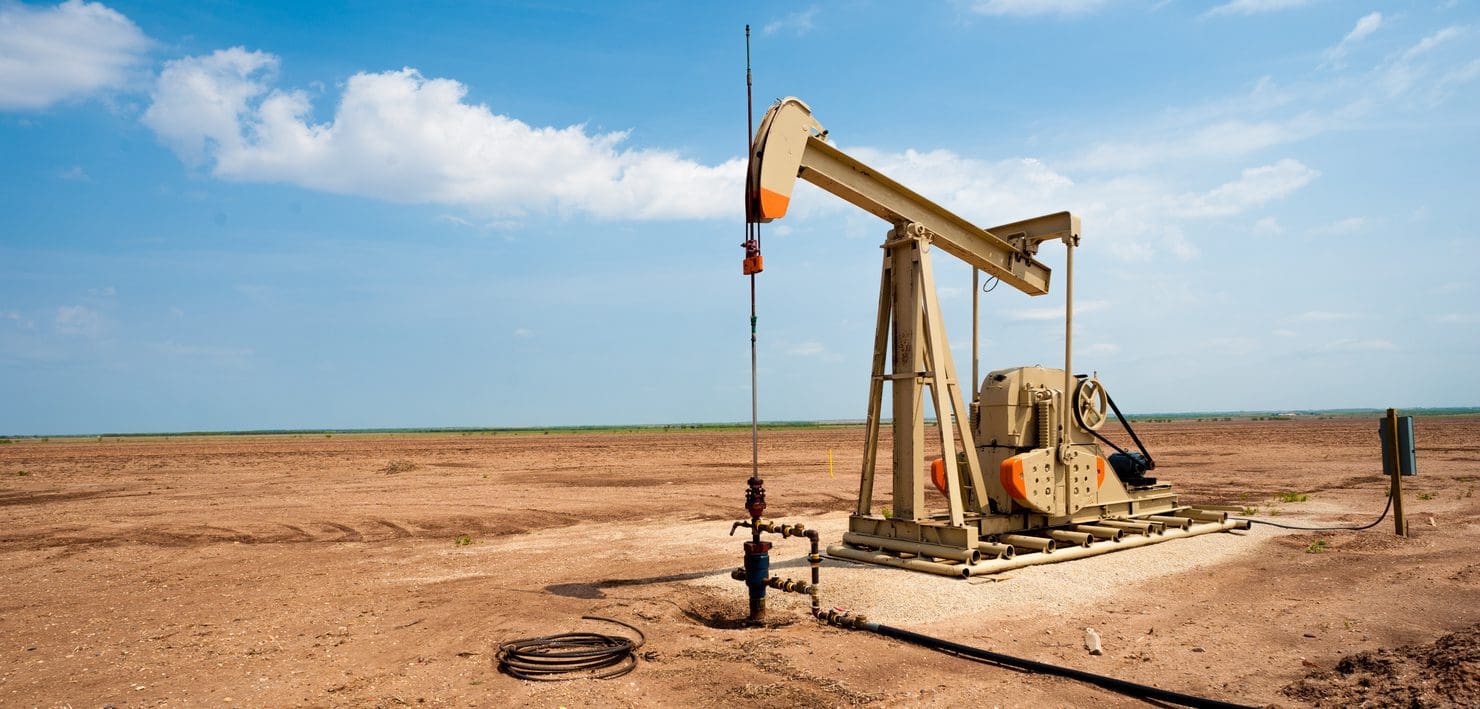Corrosion is one of the leading causes of pipeline failure in the oil and gas industry. According to a study conducted by the National Association of Corrosion Engineers (NACE), pipeline corrosion can cost anywhere between $5.4 billion and $8.6 billion in the United States alone.
Of all the different types of corrosion, pitting corrosion is considered to be the most severe due to its rate of growth and detection difficulty. It is estimated that over 90% of corrosion failures of transmission pipelines in the U.S. between 1970 and 1984 were due to pitting corrosion.
Crude oil and natural gas contain compounds and impurities that are inherently corrosive to steel equipment. Carbon dioxide (CO2), hydrogen sulfide (H2S) and free water found in transportation and extraction processes are naturally aggressive and can, over time, form pits in the inner walls of pipelines and wells.
In this article we will discuss the mechanisms responsible for pitting corrosion in the oil and gas industry and look at the most commonly employed prevention methods. (An introduction to pitting corrosion in general can be found in the article All About Pitting Corrosion.)
The Most Common Causes of Pitting Corrosion in Wells
Pipelines, wells, and their fittings are especially susceptible to corrosion because they are typically constructed from various grades of carbon steel. Modern oil and gas transportation and extraction techniques can often result in fluid composition changes, souring of wells and changes in pressures and temperatures that can create a corrosive environment that is detrimental to steel components.
Pitting in pipes and wells is made possible mostly due to weak spots in the metal’s natural passivating/protective oxide film. These areas preferentially corrode and result in a concentrated and localized type of corrosion that is highly penetrative and destructive. Locations susceptible to pitting corrosion in oil and gas wells and pipelines include areas with sulfide impurities and poorly applied coatings. Once pitting occurs, the ensuing damage leads to material degradation, loss of wall thickness, leaks and increases in local stresses.
In the oil and gas industry, corrosion is frequently the result of chemical reactions between CO2 or H2S and steel, with water usually acting as a catalyst for the reaction. Overall, the most common types of oilfield corrosion responsible for pitting are:
- Sweet corrosion
- Sour corrosion
- Oxygen corrosion
- Crevice corrosion
- Microbiologically induced corrosion
We will examine each of these types in the sections that follow.
Sweet Corrosion
By far, sweet corrosion is the leading cause of pitting in oil and gas wells and pipelines. This type of corrosion is initiated due to the corrosive action of sweet gases, i.e., gases that do not contain hydrogen sulfide (H2S) but may include some amounts of carbon dioxide (CO2). The CO2 component of sweet gases is widely recognized as one of the principal corroding agents in the oil and gas industry.
Dry CO2 itself does not present much of a problem. However, when supercritical CO2(such as that found in extractions using gas injection) reacts with water, carbonic acid (H2CO3) is produced. Carbonic acid reacts with the iron found in steels to produce the brittle and flaky corrosion product, iron carbonate (FeCO3). The overall chemical reaction is shown below:
Fe + H2CO3 → FeCO3 (iron carbonate) + H2
The rate of pitting due to sweet corrosion is dependent on several factors including pH values, temperature, flow conditions and metal properties.
Sour Corrosion
Sour corrosion, as its name suggests, is corrosion caused by the exposure of metal to sour gases. Sour gases are gases that contain significant amounts of H2S, a compound that is highly acidic and known for its aggressive corrosiveness. H2S may be found naturally or manually injected into wells during gas injection to improve the miscibility of the injected gases with petroleum in the reserve.
When H2S is dissolved in water, an acid with an abundance of hydrogen ions is formed. These hydrogen ions increase the rate of hydrogen absorption and pitting corrosion in steels. H2S reacts with iron and water to form various corrosion products known as iron sulfides (FeSx). The overall chemical reaction is shown below:
H2S + Fe + H2O → FeSx + 2H + H2O
Oxygen Corrosion
Oxygen dissolved in drilling fluids is another major cause of pitting and oxygen corrosion, especially in well casings. Oxygen can be introduced into wells through completion activities, gas lifting, leaking equipment and open hatches. The presence of dissolved oxygen intensifies the corrosive action of the CO2 and H2S acidic gases to the point where inhibition becomes increasingly difficult.
Crevice Corrosion
Crevice corrosion is a type of localized corrosion that usually occurs in or adjacent to cracks and gaps on metallic surfaces. Fluid enters the crevice and remains stagnant, which gives rise to a series of reactions that make the stagnated fluid acidic in nature. This acidic fluid breaks down passive oxide layers and leaves the metal substrate vulnerable to corrosion attack. (Discover the ins and outs of crevice corrosion in the article What’s the Inside Scoop on Crevice Corrosion?) Severe crevice corrosion is highly localized and can penetrate the thickness of the metal to create pits at various locations.
Microbiologically Induced Corrosion
Microbiologically induced corrosion is caused by bacteria present in fluids. The metabolic activities of these organisms result in the release of H2S and CO2 gases that can increase the toxicity and corrosivity of the environment in the well or pipeline.
Studies have found that microorganisms are frequently present in oil and gas reservoirs. Microbiologically induced corrosion is characterized by the appearance of slimy, gelatinous deposits on the inner walls of the pipeline. Pitting corrosion is most likely to be found just under the areas where these deposits have accumulated over time.
Mitigating Pitting Corrosion in the Oil and Gas Industry
Corrosion in the oil and gas industry is not a static phenomenon, and therefore its prevention presents numerous challenges. Fluid properties, pressures and temperatures are constantly changing, thereby making some traditional corrosion mitigation techniques less responsive than others.
Some of the most widely used and effective corrosion mitigation methods used in oil and gas wells and pipelines are discussed below.
Corrosion Inhibitors
These are chemicals that are applied to the surface of the metal to suppress the reactions that cause corrosion. Inhibitors work in several ways, including:
- Restricting anodic or cathodic reactions on the surface of the metal
- Increasing the potential of the metal surface, such that the metal becomes more passive and forms its own natural oxide film
- Forming a thin protective layer on the metal surface that subdues reactions responsible for corrosion.
Protective Coatings
Protective coatings are applied to the metal’s surface and act as a barrier that prevents direct contact between the metal substrate and corroding agents. Coatings are typically metallic in nature, consisting of elements such as nickel, zinc or cadmium.
Cathodic Protection (CP)
Cathodic protection (CP) is a corrosion control technique whereby the metal to be protected is deliberately made the cathode of the electrochemical cell. This entails connecting a more easily corroded metal (that acts as the anode) to the pipe such that it corrodes preferentially, therefore sacrificing itself. In longer pipelines, where the natural difference in potential between the two metals is not adequate, an external DC electrical power source is used to provide sufficient current to power the reaction. This method is known as impressed current cathodic protection (ICCP).
Conclusion
Pitting corrosion costs the oil and gas industry tens of billions of dollars every year. Although corrosion is found in various industries such as transportation, construction, manufacturing, etc., the H2S and CO2 gases responsible for pitting are most commonly encountered in the oil and gas sector. For this reason, it is essential that the principles of oil and gas corrosion be understood in order to take effective measures to prevent or mitigate pitting from occurring.
This article initially appeared on Corrosionpedia.com. It is republished here with permission.
Krystal is a civil engineer and project manager with an MSc in Construction Engineering and Management. Her experience includes the project management of major infrastructure projects, construction supervision, and the design of various infrastructure elements including roadway, pavement, traffic safety elements and drainage. Krystal is also a published author with the Transportation Research Board in Washington, D.C.







